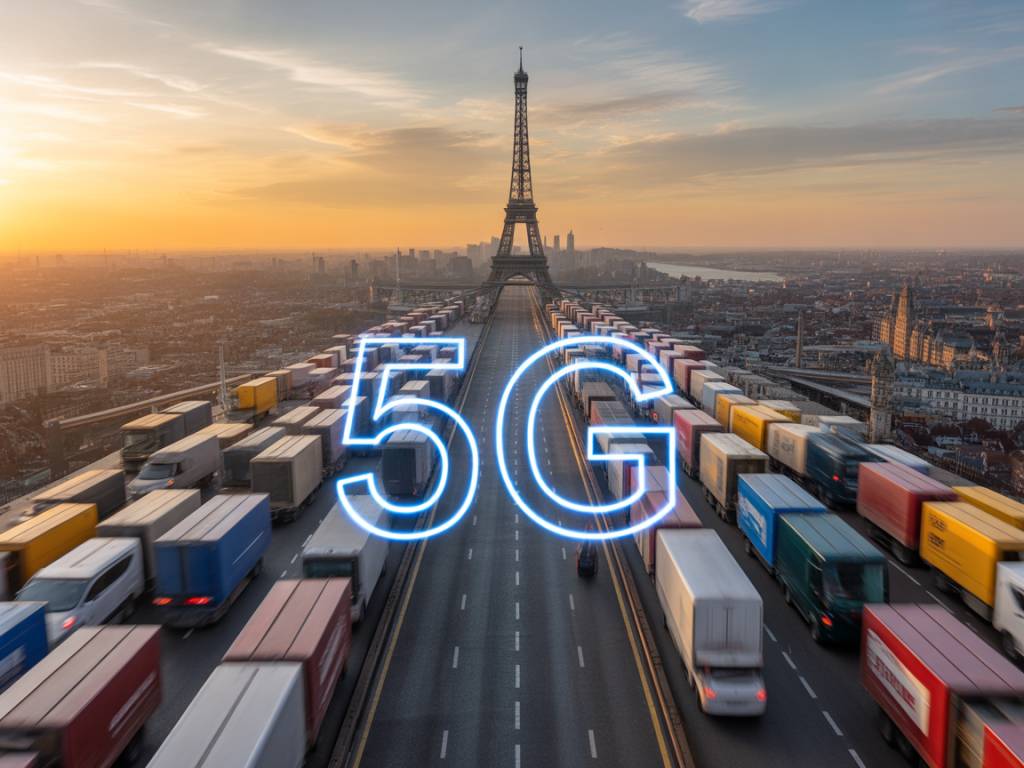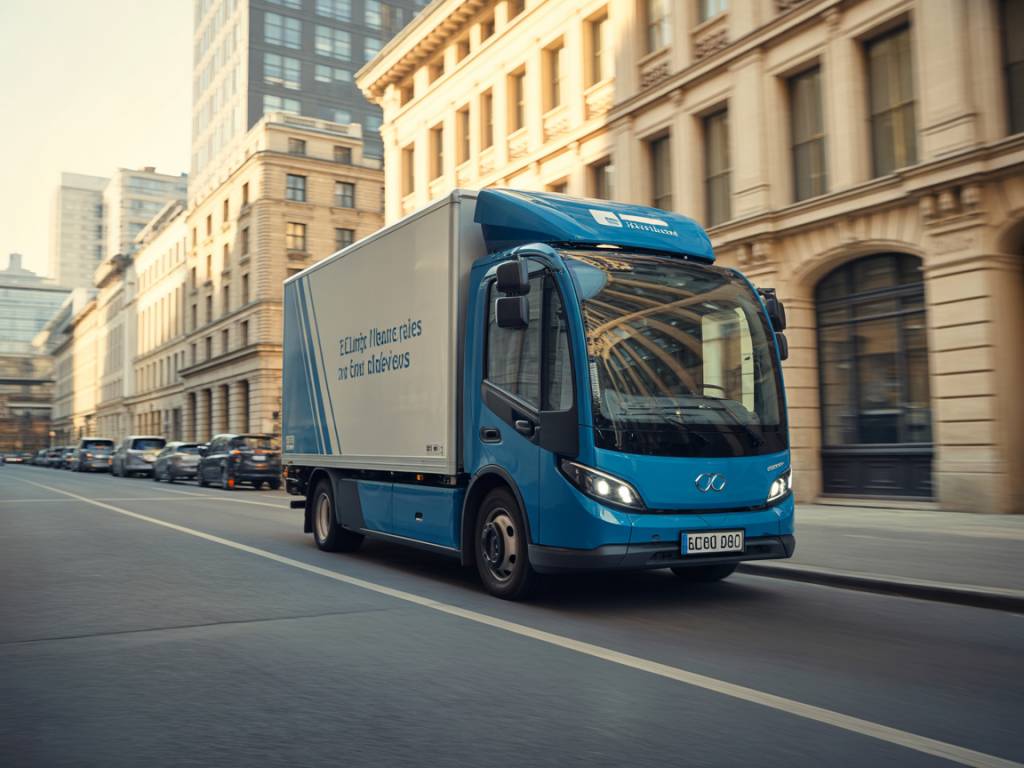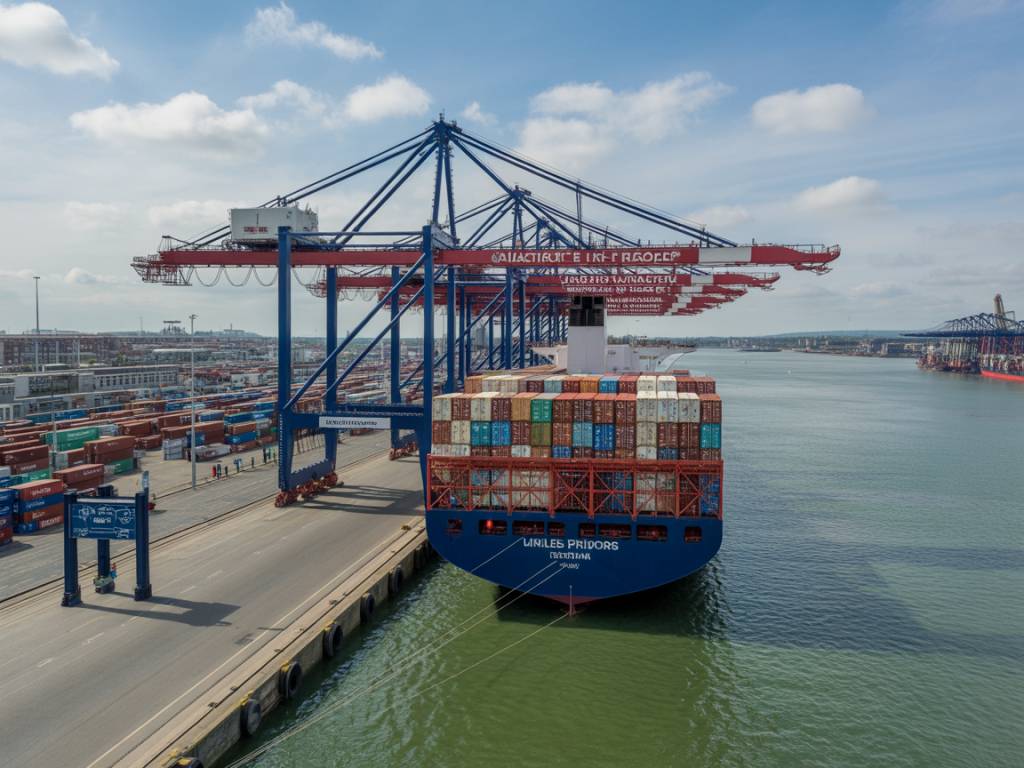The Logistics Revolution in Progress
For the UK logistics sector, the rapid rollout of 5G isn’t a tech trend to passively observe — it’s a transformation already reshaping warehouse operations, fleet management, and supply chain visibility. From Midlands distribution centres to urban micro-fulfilment hubs in London, logistics actors are rethinking their operations around a new network backbone: one that’s ultra-reliable, low-latency, and ready for real-time responsiveness.
But what does that really mean on the ground? What tangible gains is 5G delivering — and what barriers remain on the road to full-scale deployment?
Beyond Speed: What 5G Really Brings to Logistics
While media coverage often highlights consumer-facing benefits of 5G — streaming, gaming, mobile speed — its industrial impacts are arguably far more disruptive. At its core, 5G gives logistics firms three crucial capabilities:
- Ultra-low latency: enabling near-instant communication between devices, processes, and control systems.
- High device density: allowing thousands of IoT sensors in a single location to operate without interference.
- Network slicing: letting logistics providers build secure, dedicated slices of the 5G network for specific use cases.
These features are no longer theoretical. They’re already being tested and, in some cases, deployed in UK pilot programmes — particularly private 5G networks in warehouses and at ports.
Inside the Warehouse: Smarter, Faster, Safer
One of the most visible impacts of 5G in logistics is in the warehouse environment. DHL Supply Chain, for instance, recently trialled a private 5G network in its Milton Keynes facility. The results? A 20% increase in the speed of automated guided vehicles (AGVs) thanks to near-zero latency communications with cloud-based WMS platforms.
According to Mark Hillier, UK Operations Director at DHL, “5G is eliminating previous connectivity bottlenecks between high-volume scanners, mobile robots and our back-end systems. We’re processing orders faster, with tighter coordination and fewer errors.”
Safety is also improving. Because 5G allows real-time object detection and environment mapping via LiDAR and vision sensors, AGVs and humans are better able to coexist in dynamic environments — a crucial factor as firms push toward higher levels of warehouse automation.
Port Logistics and Intermodal Transport: Real-Time Coordination
Ports are another priority zone for 5G experimentation. The Port of Felixstowe, the UK’s largest container port, launched a 5G testbed in 2022 to improve coordination between cranes, vehicles, and real-time container tracking systems.
This is more than a connectivity upgrade: it’s about making split-second decisions in complex environments where delays cascade quickly. Rob Hastings, CIO at Hutchison Ports, explains: “5G allows us to synchronise equipment and operator instructions in real time. That reduces misloads and idle time – both major contributors to cost.”
The port’s 5G system integrates data from CCTV, drones, traffic sensors, and IoT-connected machinery to build live operational dashboards. This kind of situational awareness wasn’t possible under previous wireless network conditions.
Fleet Management Gets Predictive
5G’s potential isn’t confined to warehouses and ports — it’s revolutionising road logistics as well. Transport and fleet managers are building systems that respond proactively to real-world conditions. That means:
- Live vehicle diagnostics transmitted continuously via 5G.
- Collaboration between vehicles and road infrastructure, utilising smart traffic signals.
- Dynamic route optimisation based on live traffic, weather, and inventory needs.
UPS is among the early adopters integrating 5G with vehicle telematics. Using a private 5G network, they’ve trialled edge analytics to predict vehicle part failures before breakdowns occur. With maintenance alerts issued in real-time to fleet managers, downtime is significantly reduced.
For temperature-sensitive sectors such as pharma and fresh produce, the low-latency communication enabled by 5G is a game-changer. Cold chain monitoring can become continuous and adaptive, alerting drivers or rerouting shipments automatically when thresholds are breached.
From Experimentation to Scale: The Barriers
If 5G delivers such critical benefits, why isn’t it already ubiquitous across the UK logistics network?
The answer lies in a combination of infrastructure gaps, cost concerns, and regulatory questions. A few key hurdles remain:
- Coverage inconsistency: Many rural logistics hubs still lack reliable 5G signal, undermining seamless cross-site operations.
- Investment hesitation: For SMEs in the logistics sector, the ROI on private 5G infrastructure is not always immediately clear.
- Integration complexity: Replacing or retrofitting legacy systems with 5G-ready alternatives requires significant change management.
That said, the UK government’s 5G Supply Chain Diversification Strategy – with more than £250 million pledged for infrastructure development – is expected to accelerate access in coming years. Projects like 5G Testbeds & Trials and the Smart Freight Centre have helped bridge the innovation gap for early adopters.
The Rise of Private 5G Networks
With public 5G coverage patchy and concerns about data security rising, many logistics companies are going private – building dedicated 5G systems within their own facilities. This not only ensures tailored performance but also improves control over mission-critical data streams.
BT and Ericsson have partnered with warehouses and airports to deploy these private networks, offering what they call « campus 5G ». The benefits? Reduced latency, guaranteed bandwidth, and stronger cyber-resilience.
However, as noted by Dr. Emma Stansfield, Senior Research Fellow in Networked Logistics at the University of Manchester: “Private 5G mustn’t become an island. Its real value is unlocked when seamlessly integrated with enterprise systems and wider ecosystems.”
Thus, interoperability and cloud-native architecture are now seen as essential design principles among forward-thinking logistics players.
Looking Ahead: Autonomy and AI on the Horizon
5G is not the final destination — it’s the platform enabling the next wave of innovation in logistics: autonomous delivery, AI-driven route planning, and distributed warehouse networks connected in real-time.
Several startups in the UK are preparing for this horizon. Starship Technologies, which deploys autonomous delivery robots, relies heavily on stable, low-latency networks to safely navigate urban environments. Meanwhile, Ocado’s robot-operated warehouses are pushing the boundaries of what edge-compute-enabled logistics can achieve with millisecond coordination.
As AI models become more embedded into logistics decision-making, 5G ensures that the data loops feeding them are fast, reliable, and secure.
Bottom Line: Adapt or Be Outpaced
The logistics industry is historically resilient. But with 5G accelerating the push to real-time optimisation, the gap between early movers and laggards could widen quickly.
For business leaders in logistics, the message is clear: now is the moment to assess 5G’s strategic relevance to your operations. Not every facility needs a private 5G network tomorrow – but failing to understand the technological trajectory is no longer an option.
The rollout of 5G in the UK will not be uniform, nor without friction. But for those able to harness its full stack of benefits, it offers nothing short of a competitive realignment in how goods, data and decisions move across the supply chain.
And in a world where the speed of delivery increasingly defines customer loyalty, that alignment could make all the difference.




